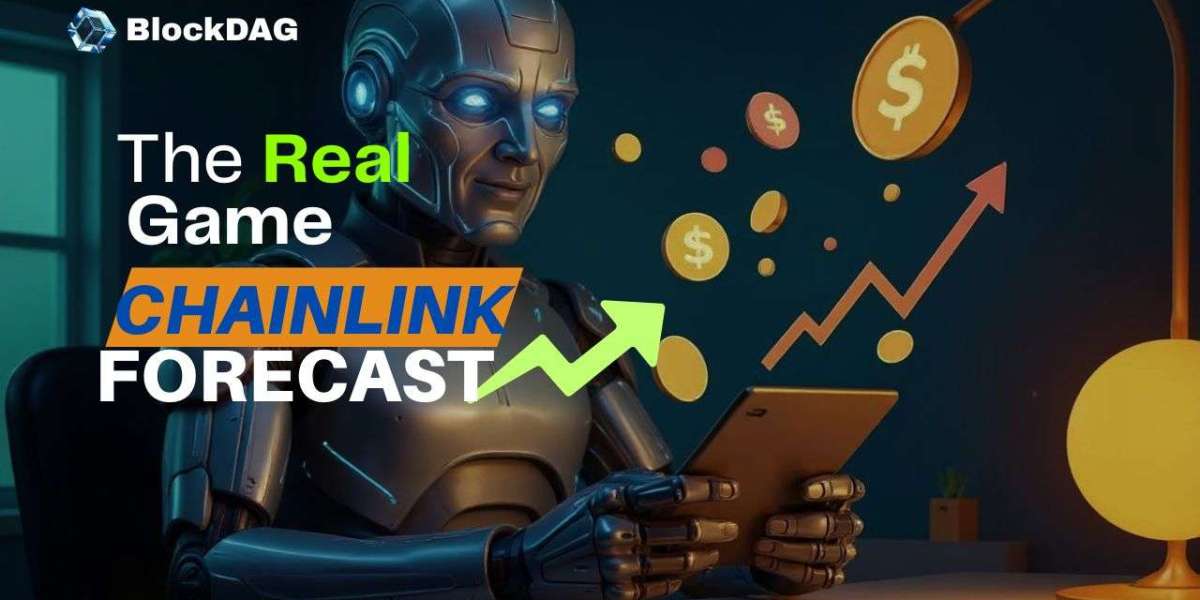I’ve been in crypto long enough to remember when Chainlink was barely mentioned outside developer forums. Back then, it was mostly Ethereum and Bitcoin dominating the chatter. But things changed quickly. Chainlink didn’t explode in price overnight like some meme coins, but it quietly built something that almost every serious DeFi project now depends on—trustworthy data from the real world.
Let’s be honest. Most people still don’t really understand what oracles do. But they’re essential. Without them, smart contracts are basically stuck in a vacuum. You need real-world data—prices, weather, sports scores, whatever—and Chainlink is the go-to for delivering it securely.
Still, for all of its impact, the token’s price hasn’t exactly been a moonshot lately. So the big question is: where does it go from here? And that’s where the chainlink forecast starts to matter for anyone thinking about the future of LINK.
Why LINK Isn't Just Another Crypto
Before diving into the numbers, it’s worth slowing down for a sec to look at what makes Chainlink different.
It’s not trying to compete with Bitcoin or Ethereum. It’s not trying to be the fastest or cheapest chain. Chainlink is infrastructure. It connects blockchains to external data and, in doing so, makes smart contracts smarter. If you’ve ever used a DeFi app or dabbled in yield farming, there’s a good chance Chainlink was involved behind the scenes.
And it’s not just hype—LINK has actual partnerships with Google Cloud, SWIFT, and dozens of top blockchain protocols. That’s not nothing.
Now, back to the point. A chainlink forecast is tricky because it doesn’t rely purely on crypto trends. LINK’s value is tied to usage, demand for data feeds, and now, with staking in place, validator participation. It’s a whole different ballgame compared to more speculative assets.
What’s Driving Chainlink’s Future Value?
The thing about Chainlink is that its price isn’t just riding Bitcoin’s coattails. Sure, when BTC pumps, everything else usually follows. But LINK’s trajectory will depend more on:
How many protocols use its services
How much data is flowing through oracles
How widely staking gets adopted
Whether competitors catch up
A few years ago, there weren’t many alternatives. Now, newer oracle solutions are popping up. But so far, none have really challenged Chainlink’s dominance.
In a practical sense, the first reliable chainlink forecast should look at fundamentals. Right now, Chainlink’s total value secured is in the tens of billions, and that number keeps growing. If it becomes the de facto oracle layer for Web3, then there’s serious upside.
Potential Scenarios: Bullish, Bearish, and Somewhere in Between
Let’s paint a few possible futures—just don’t take any of them as gospel.
Bullish case: LINK becomes a foundational layer for both public and enterprise blockchains. Staking ramps up, more data types get added, and CCIP (its cross-chain protocol) gets mass adoption. In this world, LINK could climb to $100 or more over the next several years, depending on market sentiment and crypto’s growth overall.
Bearish case: Competitors start stealing market share, regulators crack down, or adoption stalls. In that case, LINK could hover between $5–$15 for a while, or even dip lower during harsh market conditions.
Middle-of-the-road: Slow but steady growth. More integrations, steady staking returns, gradual increase in value. LINK moves toward $40–$50 by 2026–2027 if the crypto market remains healthy.
As always, nothing’s guaranteed. But a grounded chainlink forecast should leave room for all of these possibilities.
Pros, Cons, and the Stuff That’s Often Overlooked
Pros:
Industry leader in oracle services
Massive number of integrations
Real-world use cases already live
New revenue and utility coming from staking and CCIP
Cons:
Slow price movement compared to other tokens
Complex tokenomics may confuse casual investors
Centralization concerns around initial node operators
Still somewhat dependent on Ethereum’s performance
The part that often gets missed is this: Chainlink is playing the long game. It’s building deep roots. That kind of approach rarely brings overnight gains—but it’s what tends to hold up over time.
What I’m Personally Watching
If you're asking for my two cents, I’m keeping an eye on:
Adoption of staking – The more LINK locked, the better for long-term holders
CCIP rollout – This cross-chain solution could be huge if it takes off
Enterprise deals – Think real-world brands using Chainlink without even knowing it's Web3 tech
Token utility updates – The more reasons to hold and use LINK, the stronger its floor becomes
No hype here. Just trying to stay grounded and watch the actual developments, not just the charts.
It’s Not About Price Alone
Look, I know everyone wants to know if they’ll make 10x on LINK. And hey, maybe it happens. But here’s the thing—if you’re in it just for a moonshot, there might be flashier coins. What makes Chainlink interesting is its staying power. It solves a real problem. It’s being used by real projects.
So when you think about the chainlink forecast, maybe zoom out. It's not just a token. It's infrastructure. And if the Web3 world truly scales, something like Chainlink could end up being as essential as DNS or HTTPS is today. You might not notice it, but you’ll depend on it.
Where This All Could Lead
Whether LINK reaches triple digits or not, its impact might go far beyond price charts. The way it connects systems—quietly and reliably—might just be one of the biggest success stories in crypto. And you won’t see it coming, because real infrastructure tends to work best when you don’t even realize it’s there.




